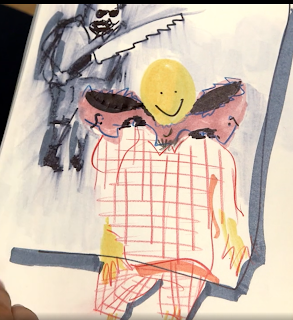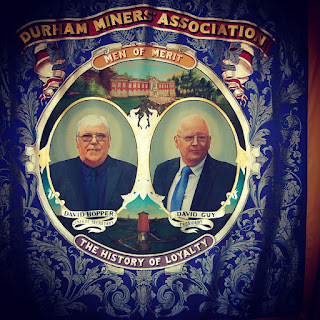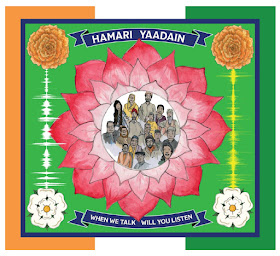I've been looking at the work of Tala Madani and in particular at the way she uses sketchbooks to help her think through ideas. As I use sketchbooks myself, both to think with and to record the things I see, I totally emphasise with her idea that sketchbooks not only allow you to work through an idea, they 'record' it, as well as preserving certain aspects of your ideas' gestation. I rarely paint from my own sketchbook images, being more a printmaker and sculptor, but there were moments of recognition for me as I looked at the relationship between her evolving ideas and their final realisation in paint. It's not good enough just to have the idea, you have to find the right format for it. In her case she has literally squeezed paint into a shape that carries her ideas. We all need to think more about our own ability to resolve ideas and how the various forms they might take manifest themselves out in the world. I wish I could simply accept that painting is what it is, but for me it also comes with a lot of other 'baggage' that unfortunately nearly always prevents me from taking the painterly route. However, whatever my own tangled up thoughts, I still think we can learn a lot from Madini's process.
An Iranian-American artist Tala Madani uses her awareness of the complex relationship between men and women that occur in a society that is still dominated by ideas of the superior male and the 'domesticated' female. She is by virtue of her residence in the USA, able to stand aside from the reality of day-to-day life in Iran and see male/female relationships as partly funny, partly about inadequacy and partly about a real frustration on her part with attitudes that mean she cant express herself in the ways that she wants to in her own country. Her portraits of Middle Eastern men are used to play out possibilities that arise from a feminist imagination reflecting on the phallic centred Iranian culture. However by reacting in the way that she does and using oil painting as her communication medium, she is also engaged with a secondary debate in relation to the visual arts culture of the country she finds herself working and living in. Are women fully emancipated in the USA? Is she free to make her own way in the world as a woman? The line between how one society thinks of the roles men and women should take and another is sometimes not as clear as we would like to think. The USA has a strong tradition of Christian ideals including those associated with determining the roles that women should be allowed to play in society; the right to life campaign for instance seeks to abolish a woman's right to choose to have an abortion.
Oil painting as a medium can also signify a particular history of art that saw women as unacknowledged background figures, whilst men played out heroic roles as genius artists.
Madani's work touches upon all of these issues, however making art doesn't solve real world problems, but even so, it does help us to think about the issues that surround them. Perhaps its real value is that we can begin to think about political and ethical problems without necessarily having to take up any one fixed position on them, and it is fixed positions that often lead us into conflict.
However, back in the world of sketchbooks, we are looking at a way of working that is traditionally seen as being about creativity and invention and Madani's use of them is very contemporary in that she is using those drawing tools we all have at hand now, such as felt tips and biros.
I also like the fact that she uses little cardboard cut out figures to work out how her audiences might relate to her large paintings in gallery spaces. It's the sort of thing we might all do, it's easy and useful.





































































